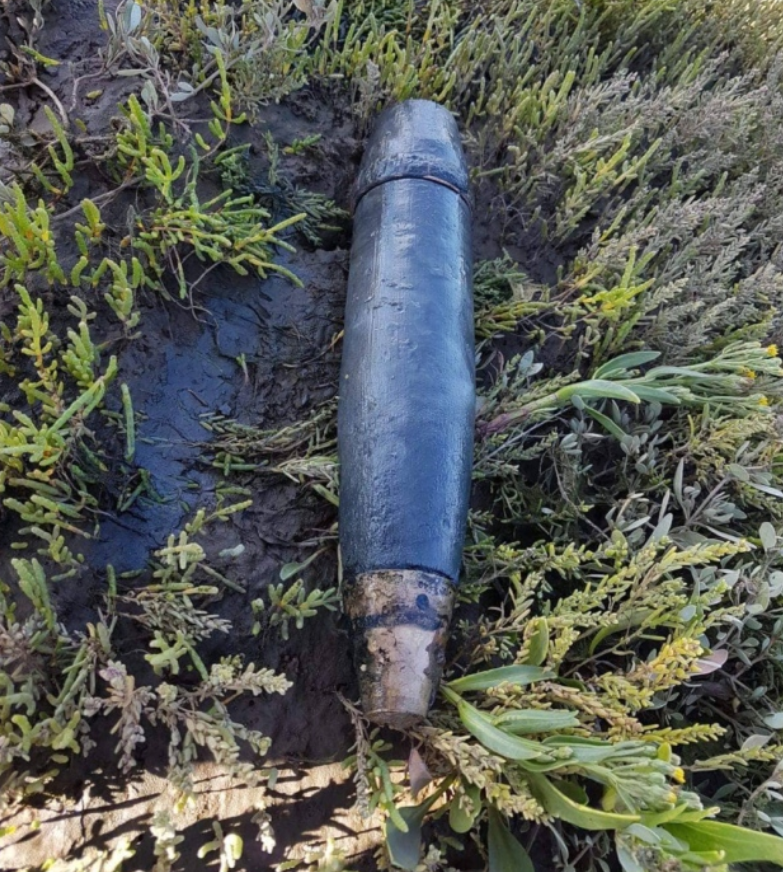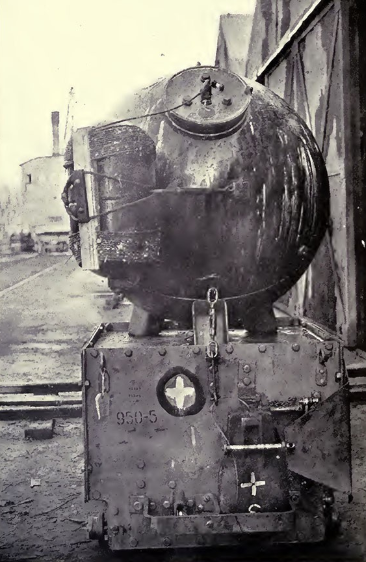Two very different UXO items found on Norfolk marshland
The Coast Guard has been called out to a suspected item of unexploded ordnance found on the north Norfolk coast. The large Mark VI naval mine was found on Thornham Marsh.
The coast guard set up a 500m cordon around the device until the tide covered the area again. A Royal Navy explosive ordnance disposal (EOD) team was then called in to deal with the device.
As the EOD engineers inspected the mine, they discovered a second item of UXO. This turned out to be a small wartime artillery shell. The driving band at the base of the shell had grooves embedded, confirming that it has been fired and subsequently fallen back to earth unexploded.

UXO on the North Norfolk Coast
Historically, there was a seaward coastal firing range to the east of Thornham. Furthermore, a number of anti-aircraft (AA) batteries occupied the wider area during WW2. It is likely, therefore, that this shell was fired out to sea from a coastal gun and over time, marine currents deposited the projectile on the marshland. Although the photograph does not give a sense of scale, it resembles a WW2 40mm AA shell, used by many LAA regiments for home defence.
The same can be said for the naval mine which would have been originally laid in an offshore minefield many kilometres away. Thousands of Mark VI mines were sewn in British waters during WW1 as a defence measure against German U-Boats. Hundreds of Allied merchant ships were sunk by U-Boats in the North Sea between 1914 and 1918.
British Mark VI Sea Mine
The Mk VI was an 86cm diameter spherical contact mine. It contained a buoyancy chamber, firing mechanism and a 300lb (140kg) high explosive charge. The Toxyl main charge was cast into the lower hemisphere. Toxyl was a mixture of 60% TNX and 40% TNT. It was tethered to an anchor which allowed the mine to float up to a predetermined depth.
Post-war mine clearance involved severing the tether cable, resulting in the mine floating up to the surface where it was destroyed by rifle fire. However, many mines did not explode, instead sinking to the seabed.
These mines were not the biggest to be deployed in British waters historically, however, their 140kg explosive charge poses a very serious hazard.

UXO Services
At Brimstone we have an excellent track record for UXO risk mitigation services. We offer assessment, survey and investigation services using a multitude of new technologies.
Keep up to date with Brimstone UXO by following us on Facebook, Instagram, Twitter, LinkedIn and YouTube.